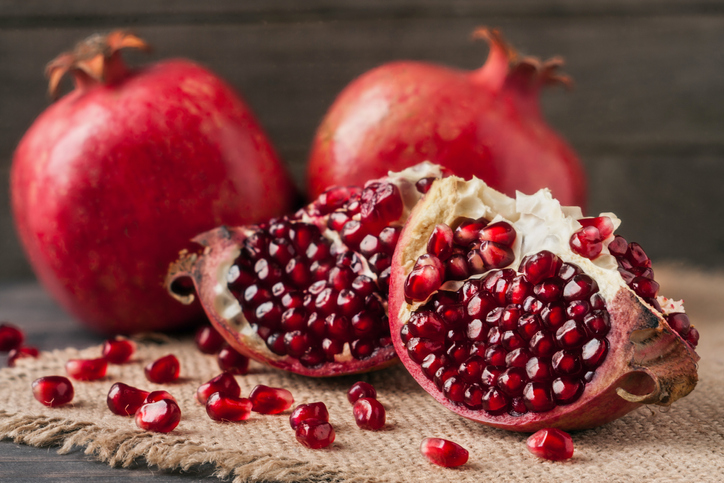Extracting Bioactive Compounds from Pomegranate Peel
18 Nov. 2019

An improved extraction method may help unlock phenolic compounds from waste fruit residues, opening new opportunities to explore their potential health benefits
Pomegranate (Punica granatum L.) is already championed for its range of purported health benefits. While most research has so far focussed on the pulp and juice of the fruit; the peel has largely been ignored. But this could be about to change. Normally a waste product from the juicing process, pomegranate peel also offers an untapped source of phenolic compounds.
These naturally-occurring substances have been linked with the prevention and treatment of various health conditions – including cardiovascular disease, obesity and cancer. But getting hold of these potentially valuable compounds from pomegranate peel in sufficient quantities to study their biological effects has so far proved challenging.
Adding an Expansion Gas into the Extraction Process
Many techniques are currently available for extracting bioactive compounds from fruit residues – including pressurised liquid extraction or ultrasound. Combining these two techniques together can also improve their performance in terms of speed, efficiency and consumption of solvents. In a new study, published in Ultrasonics Sonochemistry, researchers explore the potential benefits of introducing an expansion gas into an existing process for extracting phenolic compounds from pomegranate peel.1
The scientists prepared pomegranate peel samples by using a commercial pulper followed by oven-drying and grinding. They then extracted phenolic compounds using a combined pressurised liquid extraction and ultrasound process from an earlier study - but this time, also adding an expansion gas into the system. They followed this by using ultra-high performance liquid chromatography-mass spectrometry (UHLPC/MS) to identify specific compounds and quantified them using HPLC. The team used ultrapure water generated by an ELGA PURELAB® Flex 3 laboratory water purification system for all their experiments, minimising the risk of introducing contaminants that may affect their results.
Improved Yield, Speed and Solvent Consumption
The researchers detected a total of twenty different peaks in their pomegranate peel extracts – including α-punicalagin, β-punicalagin and ellagic acids. They found that adding an expansion gas into the system boosted yields by 20 to 26 per cent – which was approximately double that of the gain from using either ultrasound or expansion gas separately. Importantly, this was independent of particle size – which they already knew was a key factor affecting the yield of the extraction process.
The results from this study reveal the enormous potential of combining pressurised liquid extraction with both ultrasound and an expansion gas to improve the extraction of phenolic compounds from pomegranate peel. This approach should make it possible to reduce the amount of solvent used while also producing extracts with a higher concentration in shorter times than conventional pressurised liquid extraction procedures. This powerful new extraction method could eventually help pave the way for the use of phenolic compounds in from pomegranate peel in nutraceuticals and functional foods, enabling the agricultural industry to add value to waste products while enhancing human health.
Why Choose ELGA LabWater?
ELGA has been a trusted name in pure and ultrapure water since 1937. Our history of innovation helps us to research new water purification technologies and techniques. We give you the tools to achieve consistent, reliable, accurate results.
References:
1. Santos, MP. et al. Extraction of bioactive compounds from pomegranate peel (Punica granatum L.) with pressurized liquids by ultrasound combined with an expansion gas. 2019; 54: 11-17.
Dr Alison Halliday
After completing an undergraduate degree in Biochemistry & Genetics at Sheffield University, Alison was awarded a PhD in Human Molecular Genetics at the University of Newcastle. She carried out five years as a Senior Postdoctoral Research Fellow at UCL, investigating the genes involved in childhood obesity syndrome. Moving into science communications, she spent ten years at Cancer Research UK engaging the public about the charity’s work. She now specialises in writing about research across the life sciences, medicine and health.
